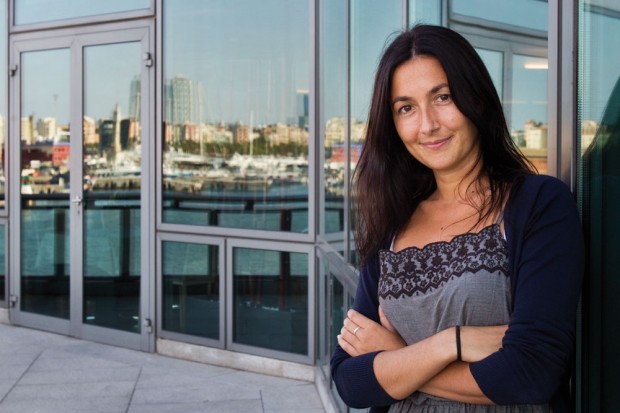Just like Einstein, Sònia Fernández-Vidal started out in the world of quantum physics because she didn’t know it was difficult. Nor did she ever think that it would be impossible to conduct research at CERN (the nerve centre of particle physics research).
At the age of 34, she has worked at CERN (Geneva), Los Alamos (USA) and the Institute of Photonic Sciences (Castelldefels, near Barcelona), and has lectured at the Universitat Autònoma de Barcelona. And if that were not enough, she has authored two best-selling books mixing science, dissemination, fantasy and love.
Her father is a philosophy and history lecturer, but she plumped for science from a very early age. She dreamed of being a scientist and going off to carry out research in the Antarctic. She discovered physics when she was at secondary school, and realised that it was what she needed to understand how that great machine, the Universe, worked.
At university she ran into and fell in love with quantum mechanics. Nevertheless, she admits that, unlike other types of research, things in this field are highly abstract and theoretical. It can often be done with pen and paper. “Mathematics is our language and guide in this unknown territory we often venture into. Sometimes we are explorers because we reach places where nobody has gone before”, she says.
The scientist feels very lucky to have had the opportunity to do research at CERN: “There were days when I would go for a coffee and could chat to a Nobel Prize-winner sitting next to me… and not always about science. The subject was often philosophy, the so-called third culture, the bridge between humanism and science.”
When the existence of the Higgs boson was confirmed on 4 July last she got all emotional and even shed a little tear: “The Higgs boson is the cornerstone of the Standard Model, which explains the essence of matter. It is the reason why some particles acquire mass and others do not. In fact, it is a kilogram distributor!”
After more than seven years in research, Sònia Fernández-Vidal felt the need to get out of the “nerve centres”, and chose a rather unorthodox way to do so: through novels. Her first novel, for children aged 9 to 99 years old, is La porta dels tres panys [The Door with Three Locks], and the other one is a love story, Quantic Love. The next work by this knowledge-spreader will be an essay. “Scientists need to get out of their Library of Alexandria if they do not want to be burnt with nobody to defend them. If we want society to call upon politicians to invest in science, then we have to explain what we are doing, and do so in plain language. Knowledge cannot remain isolated.”



